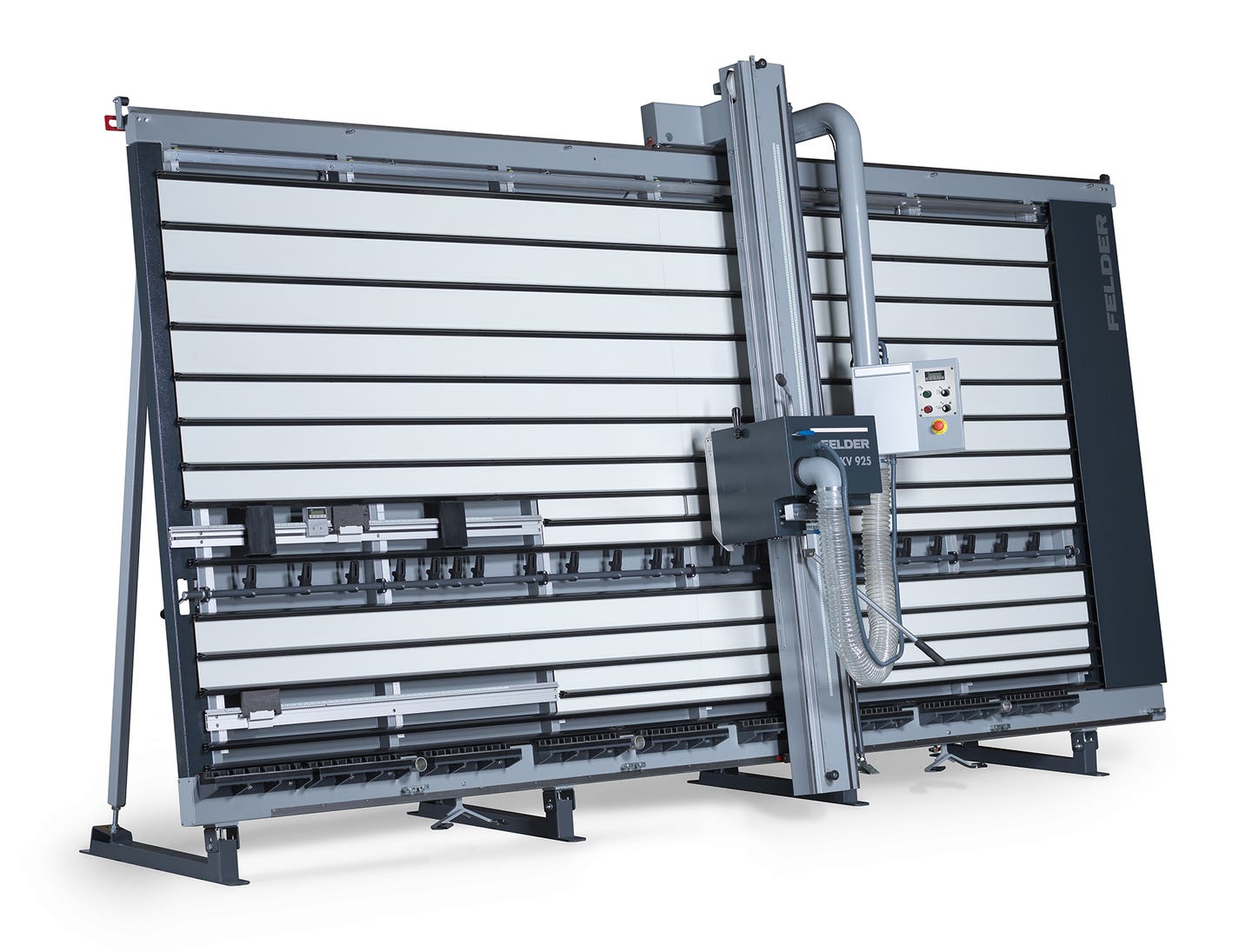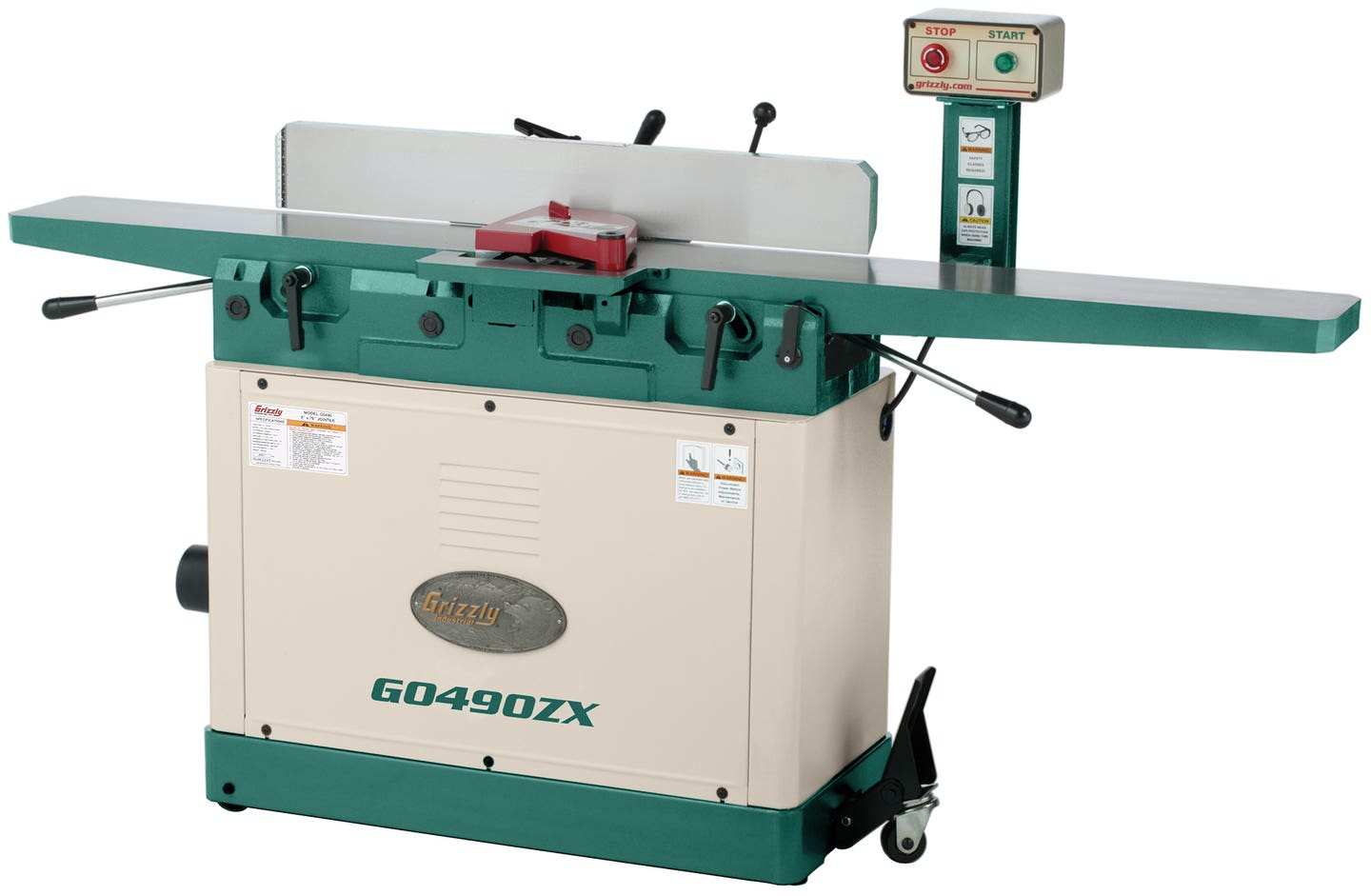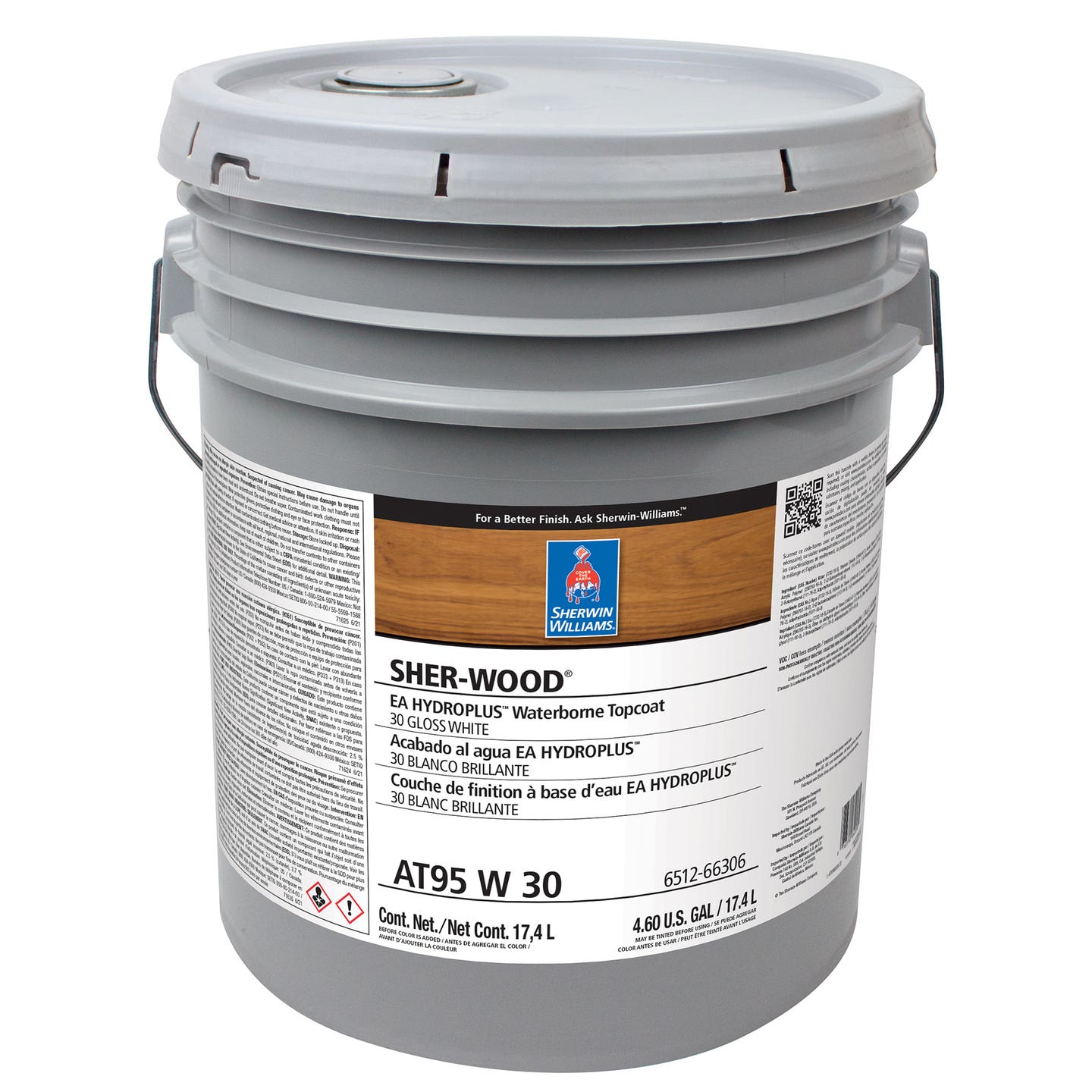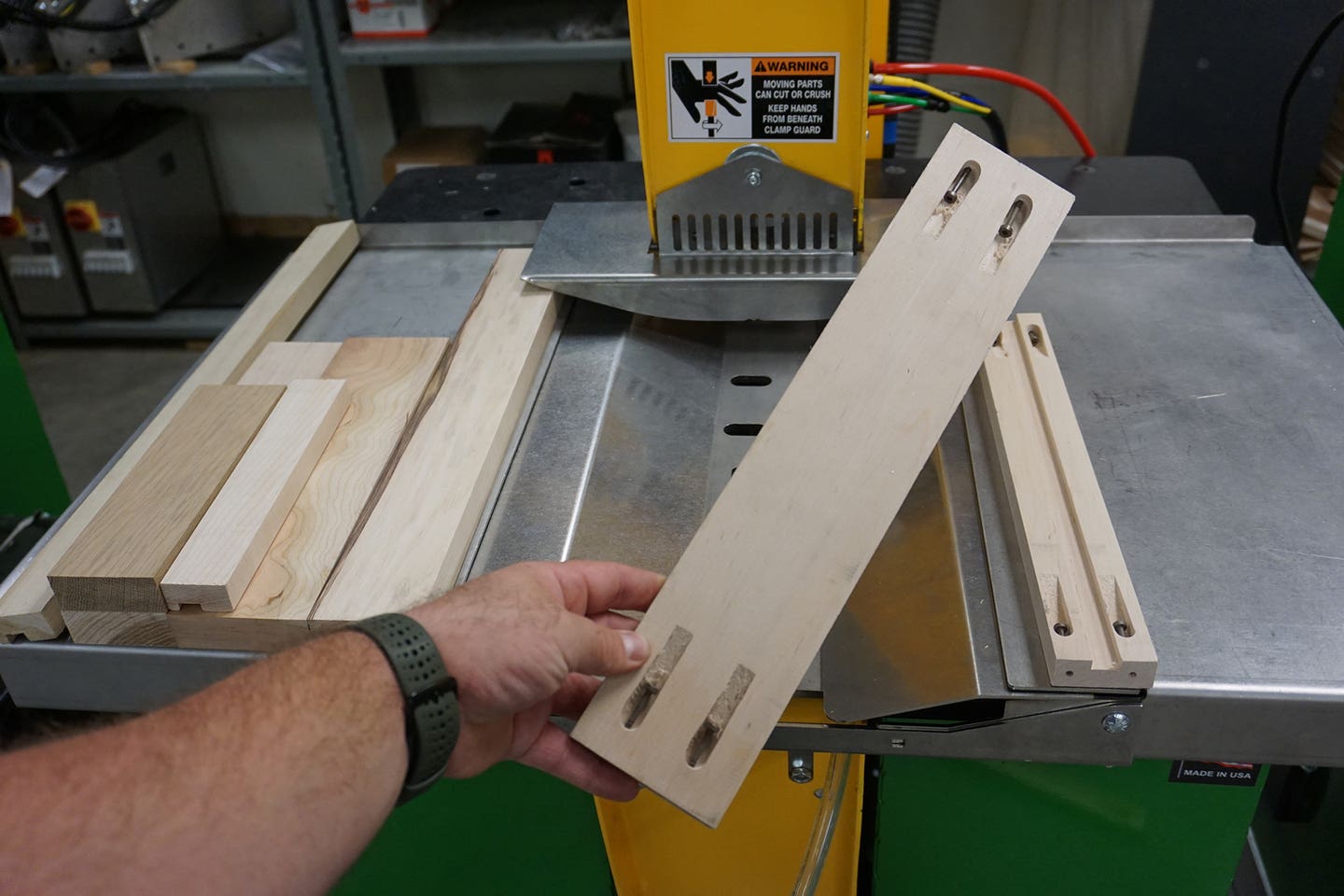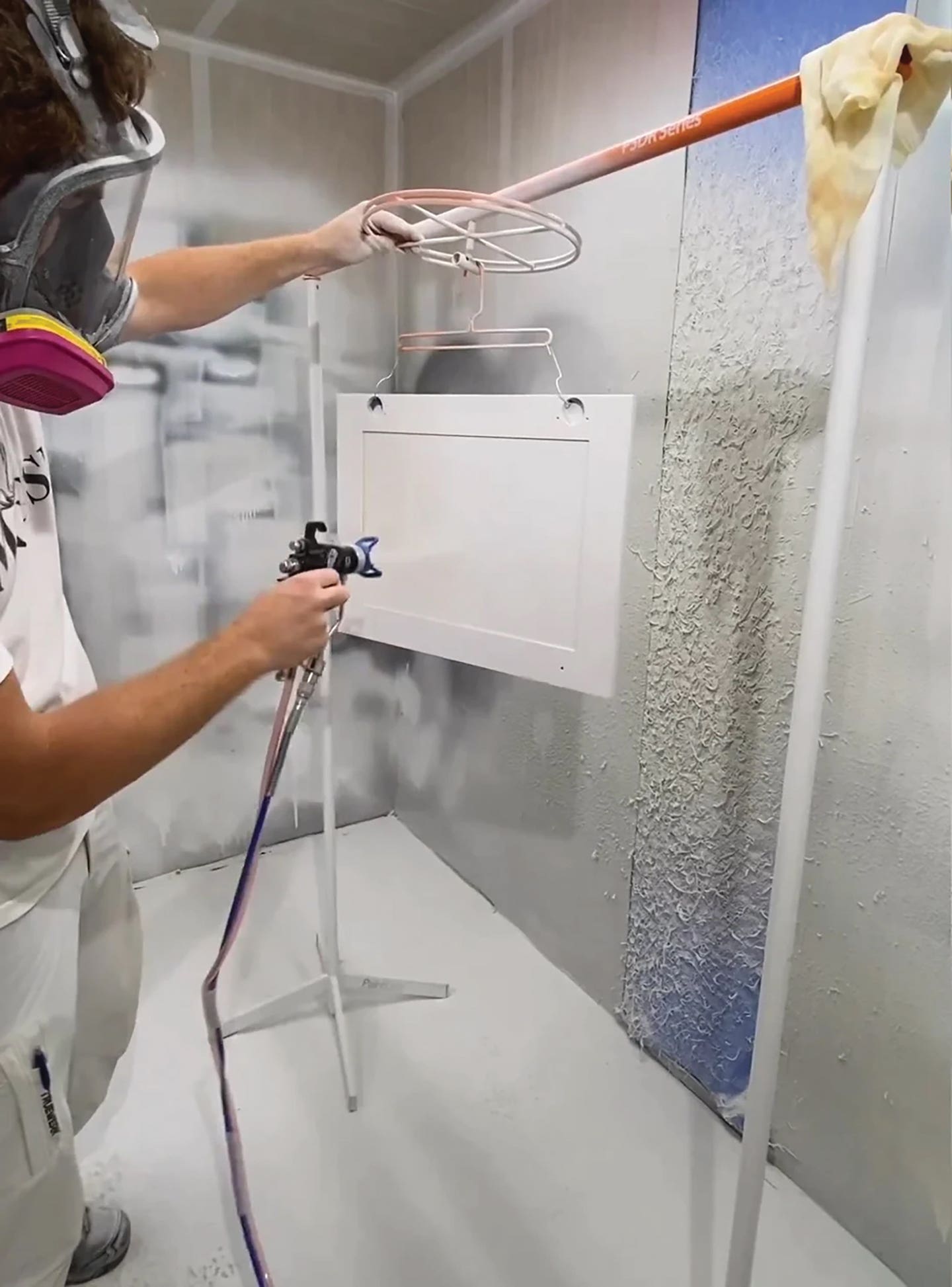Instruments of precision
Everything in woodworking requires measurement, from CNC parts and kitchen floorplans to tenons or dadoes.
Accuracy isn’t simple. Everything in woodworking requires measurement, from CNC parts and kitchen floorplans to tenons or dadoes. Some measurements allow (or even require) tolerances, while others need to be tight. But once those lines are drawn, the woodworker is committed to a dimension. So, placing the pencil lines is critical and cutting along them is crucial.
The first step in splitting pencil lines with a blade is to get the machine set up properly. There are several devices available for calibrating fences and setting bit and blade heights. One of these is the MasterGauge from Micro Fence (microfence.com). Available in two models, it helps a woodworker align, calibrate, troubleshoot, and set fences, stops, cutters and blades. For bit height, there are three sets of scales (fractions, decimals, millimeters) laser-etched into the tool’s aluminum body. The same degree of micro-precision goes into the machining of the company’s Micro Stop, designed for use with table saw cross slides, but can also be used to create repeat set-ups on sanding, doweling and mortising machines, or anywhere a shop needs to add micrometer adjustment.
Not every shop can afford the price or the space for a CNC, but there are ways to ‘turn the manual tool you have into the automated machine you want.’ That phrase comes from TigerStop (tigerstop.com) in Vancouver, Wash., that makes products with moveable stops that automatically position themselves along a fence, and the operator can program them to make several different cuts. There is even an automated loading option, and a system for dealing with defects.
One problem with setting up a machine using a manual scale is that if one’s eye is not at exactly 90 degrees to the scale, the reading can be off a hair. Infinity Cutting Tools (infinitytools.com) offers digital readout kits for both stationary and portable planers plus table saw fences (32” and 60”) and router lifts. The five separate kits are each surprisingly affordable and they eliminate guesswork in set-ups.
Laser measuring
Creating an accurate map of a room used to involve making paper or plywood templates and a whole lot of drafting. That is because, as every cabinetmaker knows, no wall is ever truly square or plumb. Now, it just takes a few minutes with a level laser on a tripod, and every oddity in a 3D space can be recorded and sent to an office computer in real time, where it can be integrated into most CAD programs.
Leica Geosystems (leica-geosystems.com) is part of Hexagon Software and the company’s ETemplate Measure Manager is a 2D and 3D software system for several models of the Disto laser measuring device. The software collects 3D measurements and creates CAD drawings as the woodworker measures a kitchen space for cabinets or counters. Woodworkers can learn more about the Disto at Advanced Dimensions (advanceddimensions.com), or at ETemplate Systems (etemplatesystem.com). Both companies have added options to enhance the basic tool.
DeWalt (dewalt.com) offers several laser measuring devices at dewalt.com. Among the newest is the DWHT77100-CN which has a 100’ range, does standard and metric readings, and can calculate areas and volume.
Milwaukee (milwaukeetool.com) offers a couple of laser distance meters, the 2282 which has a 200’ range, and the 2282 that runs out to 260’.
Laser measures come in all sizes and shapes. For example, the new pocket-sized GLM100-23 Bosch Blaze (boschtools.com) has enhanced visibility with a brighter graphic display than its predecessors. Improvements include bigger numbers, better contrast, and a more user-friendly layout with a click wheel. There is a stand-alone recessed measuring button that makes it easy to distinguish just by feel, and a rounding button that allows the user to easily round the measurement to, say, 1/32” increments. The company also offers complete tripod-mounted laser kits with receivers that can deliver accuracy down to 1/8” over 100’.
Carter Products (carterproducts.com) offers a range of lasers that help with measuring and layout on CNCs. Carter’s laser pattern projectors turn digital measurements into patterns projected on sheet goods. The company also makes digital calipers with long jays, which are ideal for measuring turned wood items.
Hand tools
In late June, Woodcraft (woodcraft.com) added several measuring tools to its Pinnacle Line. They include a 24” precision T-square, a drawing triangle set, standard and metric straight rules, thumb rules, a center finder, a universal slide stop for rulers, a straight rule hook stop, an 18” triangle ruler and a mini carpenter’s square. Senior product development manager Joe Young said the new products include both general measuring instruments and finely calibrated tools for both advanced and entry-level woodworkers. He also noted that the new precision squares are monolithically machined out of a single piece (versus having riveted panels), and that the T-Square is machined on a five-axis machining center using a single setup.
Woodworkers looking for a basic measuring tool set might want to look at the five-piece T33023 Woodworking Set from Grizzly Industrial (grizzly.com). It contains a 10” black anodized aluminum try square with metric and standard laser-etched gradations. There is also a flat multi-gauge that has a tapered edge for accessing recesses, a gauge for screw threads and diameters, and a thickness gauge for wire, washers, and sheet metal. And the kit includes a 6” dial caliper, a center punch with depth control for locating screw tips, and a carbide scribe that works on hardened steel, glass, and ceramics.
FastCap (fastcap.com) just added the Blue Dog Square to its online catalog. It looks like another L-square, but it has a secret. There are five rotating dogs built into the arms, so the square sits on the edge of material. The square can be used on flat surfaces too, as the dogs snuggle back into the tool’s body when lying on a horizontal surface. The square can hang on vertical panels while resting on the dogs, providing an accurate reference line and a third hand. It was developed by a woodworker on the shop floor.
Woodshops using European machines or building for markets outside the U.S. need to be able to measure in meters. Ohio-based Practical Products (practicalprods.com) has just added several new Starrett tape measures to its catalog, among which is the ST-126ME which has both metric and standard markings. At 1” wide, it offers a 7’-long standout (how far it will reach before bending) and is gradated in both 1/16” and 1 mm increments. The tape is 26’ long.
One of the more frustrating aspects of marking out is that most squares have one wide side and one narrow. So, transferring a mark around a 90-degree corner is a two-step process. First, we must make a small mark and then we reset the square to extend that and draw a line. The 45/90 Degree Layout Miter Gauge from Rockler (rockler.com, item No. 26744) is a solid aluminum gauge that gets past this by simply making both faces wide. It is ideal for picture frames, corner molding, and drawer construction, plus setting a saw blade or drill press for angled jobs. While the wide face adds stability, its interior windows also make it possible to mark parallel lines.
Another clever device, the FitFinder 1/2 Gauge from MicroJig (microjig.com), will instantly find the half-thickness or centerline of any material up to 3” thick. It lets the woodworker create perfectly fitting work such as half-laps with zero guesswork or set fences and transfer cutting depths instantly. And it does it without math or measuring.
The very affordable Multi-Mark from Kreg (kregtool.com) has been around a while but is still one of the handiest marking and measuring tools available. It handles miters, trim reveals, transferring readings up to 10-1/2”, setting tool and bit heights, and more. It has a sliding lockable rule with standard and metric markings, which can be positioned horizontally, vertically and at 45 degrees. It also has a 3/16” shelf built into its body, which makes it easy to set window and door trim reveals that are equal all around the opening.
Irwin Tools (irwintools.com) has added lighted box beam levels that have LED lights in the vials, that can be turned on or off. The idea is better readability in low light such as closets, basements or when working at dusk. They also have retractable end caps for scribing into and through corners.
Lee Valley & Veritas (leevalley.com) currently offers almost 300 items in the measuring and marking tools section of its catalog. They include marking tools, knives, awls, gauges, wooden and mechanical pencils, squares, rules, measuring tapes, calipers, compasses, trammels, dividers, protractors, and much more.
Lie-Nielsen Toolworks (lienielsen.com) is another essential resource when it comes to exacting cuts. There you will find proprietary Lie-Nielsen products along with trusted names such as Starrett squares and rules plus Tite-Mark gauges from Glen-Drake.
Klingspor’s Woodworking Shop (woodworkingshop.com) carries measuring and marking devices from brands such as Milescraft and Incra. And Woodpeckers offers a huge range of proprietary measuring tools at woodpeck.com.
One final thought: one of the more crucial measuring tasks is drilling holes for handles on a completed kitchen or bath. A small error can scream across the room. True Position Tools (truepositiontools.com) has created a drill guide for handling this job that eliminates the possibility of minor errors, even with new employees. And it makes quick work of repeat locations, when all the handles need to be the exact same distance from door edges.
Maybe some aspects of accuracy are simple after all.
This article was originally published in the August 2023 issue.



